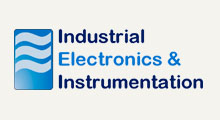Smart Community Energy Management System (SCEMS)
Active Projects
About the Project
SCEMS ( Smart Community Energy Management System) project aims to develop an Energy Management System (EMS) for a 'Smart Community' with high penetration of photovoltaic and energy storage in the framework of the future electrical networks. This EMS would behave as an aggregator of distributed energy resources that would allow the active participation of the so called 'prosumers' in an open market. This development would permit the integration of renewable energies in Smart Grids, task at present complicated because of the intermittent and unpredictable nature of the sources (the sun or wind), aidding the participation of the communities in the electrical market, with a constant eye on minimizing the costs of the global consumption of energy. To this end, it would be necessary to implement new solutions to improve the Hosting Capacity (HC) of the distribution network, removing situations in which the feeding for distributed generation reduces or disables the capacity of new connections. To evaluate the HC it is necessary to decide a few indexes of behavior that should indicate whether network conditions are acceptable or not. HC limit is the key factor for an index, so that when its value is over the limit, network conditions will be considered inadmissible, therefore this must be avoided. It will be analized how to increase the HC using real-time information about both, generation and demand (DSM-DR), and hybrid micro-storage, and the dynamic calculation of certain indexes of Power Quality and Realiability (PQR) that govern the HC. These indexes might be accurately known either in the interface or in the PCC (point of common coupling). However, this project proposes a novel solution based on incorporating the PQR in the programming of the loads (Smart Load Management, SLM), technique that has not been considered up to date. By means of this EMS there would be obtained a better use of renewable energies, reducing dramatically the energy-related consumption costs with both, economic and environmental benefits. Additionally, the development of an ontology and an infrastructure of databases considering both, the generation and consumption figures, will allow the widespread representation of any system. It would cause a transference of knowledge, sharing, re-using and applying the studies carried out in this project to different facilities. This will allow interoperable algorithms, models, and estimations results between different investigations and facilities, creating a common frame not only at national, but also at international research level.
Project Slides
Partners






